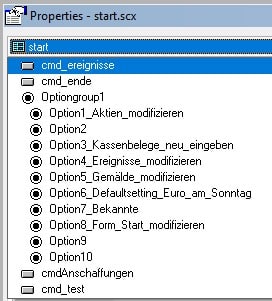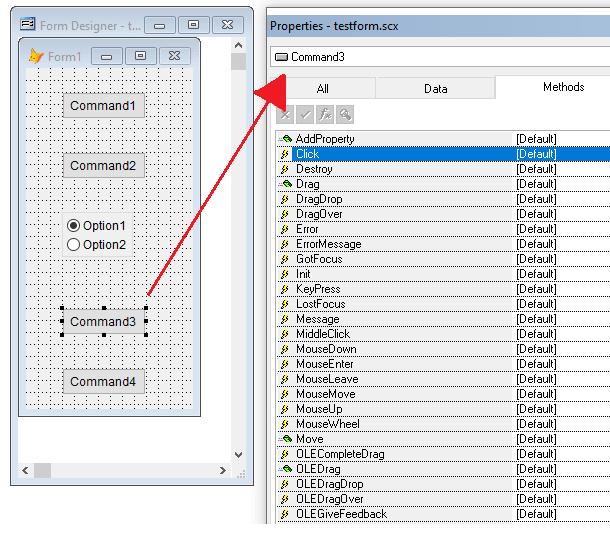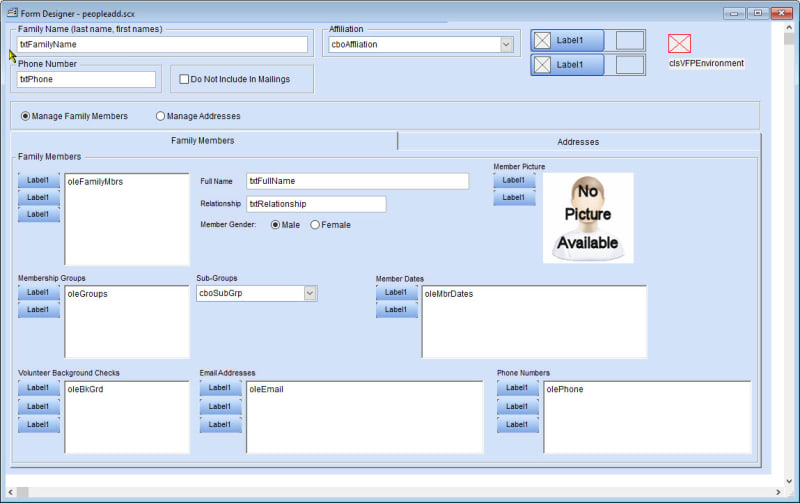I created a form with lots of command buttons on it and then I added an option group to this form.
Later, a few more command buttons were added. If I want to change the code for a command button,
I can see this command button with all the other objects in a list when I click on a command-button within development-mode -
but this list is obviously sorted by time so that the command buttons created first are visible, then the option group and only then the followed by command buttons that I added later (after the option group was created).
Question:
Can this list be sorted so that all command buttons appear together?
*******************************************************************
Example:
Now:
cmd-1
cmd-2
optiongroup
option-1
option-2
and more options
cmd-3
cmd-4
but:
I want it so:
cmd-1
cmd-2
cmd-3
cmd-4
optiongroup
option1
option2
and more options
*********************************
Then it is easier to find the right command button to change.
Thanks
Klaus
Peace worldwide - it starts here...
Later, a few more command buttons were added. If I want to change the code for a command button,
I can see this command button with all the other objects in a list when I click on a command-button within development-mode -
but this list is obviously sorted by time so that the command buttons created first are visible, then the option group and only then the followed by command buttons that I added later (after the option group was created).
Question:
Can this list be sorted so that all command buttons appear together?
*******************************************************************
Example:
Now:
cmd-1
cmd-2
optiongroup
option-1
option-2
and more options
cmd-3
cmd-4
but:
I want it so:
cmd-1
cmd-2
cmd-3
cmd-4
optiongroup
option1
option2
and more options
*********************************
Then it is easier to find the right command button to change.
Thanks
Klaus
Peace worldwide - it starts here...





